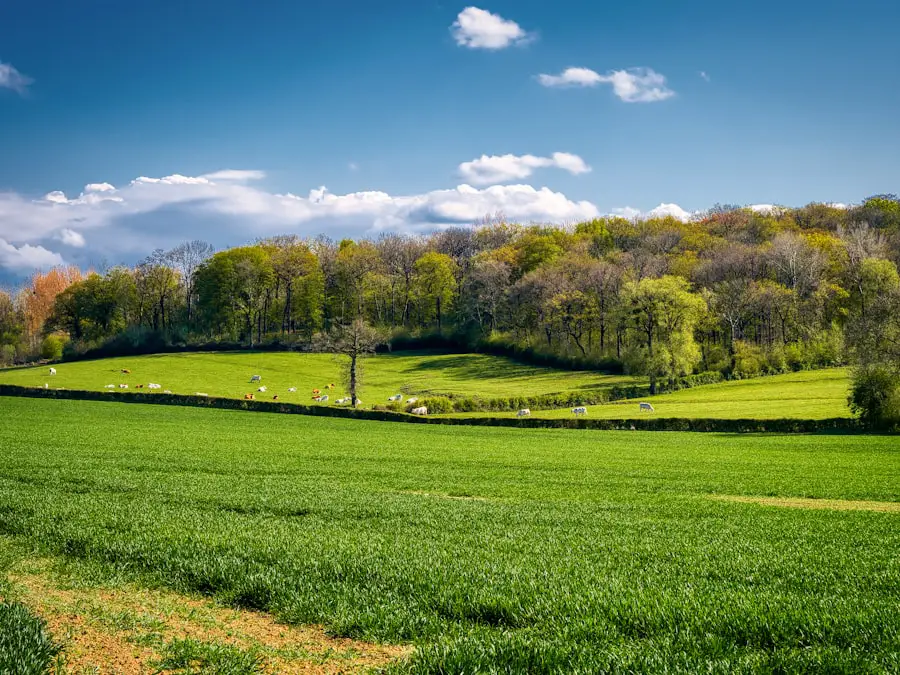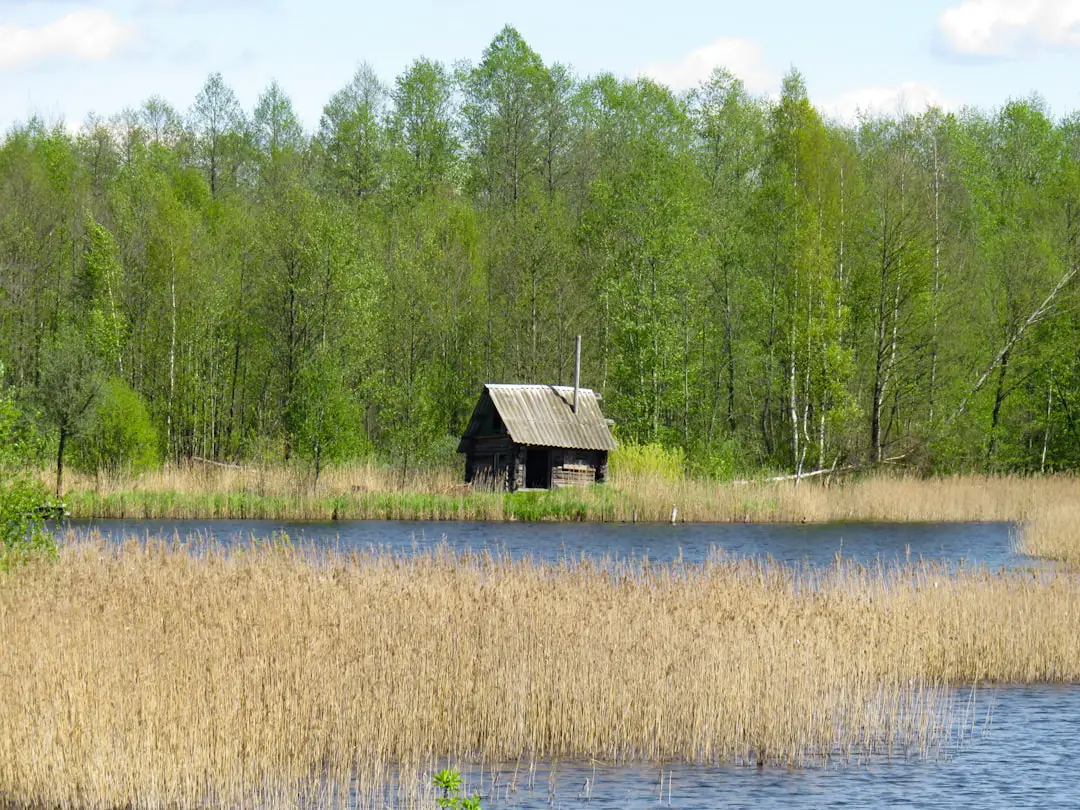Ireland, often referred to as the Emerald Isle, is renowned for its lush landscapes, rich history, and vibrant culture. However, one of the most captivating aspects of this island nation is its diverse weather patterns and seasonal changes. The climate in Ireland is classified as temperate maritime, characterized by mild temperatures and frequent rainfall throughout the year.
This unique weather system is influenced by the North Atlantic Ocean, which moderates temperatures and contributes to the island’s verdant scenery. As a result, each season in Ireland brings its own distinct charm, offering visitors a variety of experiences that reflect the beauty of the natural world. Understanding Ireland’s seasons is essential for anyone planning a visit.
The country experiences four distinct seasons: spring, summer, autumn, and winter. Each season not only transforms the landscape but also influences local customs, festivals, and outdoor activities. From the vibrant blooms of spring to the cozy atmosphere of winter, Ireland’s weather plays a pivotal role in shaping the experiences that await travelers.
This article will delve into each season, exploring the unique characteristics and offerings that make Ireland a year-round destination.
Key Takeaways
- Ireland experiences a temperate maritime climate with mild winters and cool summers.
- Spring in Ireland brings blooming flowers, lush green landscapes, and milder temperatures.
- Summer in Ireland is characterized by warm weather, longer days, and a festive atmosphere with various events and outdoor activities.
- Autumn in Ireland offers a colorful and cozy experience with beautiful foliage and the opportunity to enjoy traditional Irish music and dance.
- Winter in Ireland is a time for cozy pub visits, stunning scenery, and the chance to experience the country’s festive holiday atmosphere.
Spring: A Season of Blooming Beauty
Spring in Ireland typically spans from March to May, heralding a time of renewal and growth. As the days grow longer and temperatures begin to rise, the countryside bursts into life with an explosion of color. Wildflowers such as daffodils, bluebells, and primroses blanket the fields and woodlands, creating picturesque landscapes that are a feast for the eyes.
The famous gardens of Ireland, such as those at Powerscourt Estate in County Wicklow or the National Botanic Gardens in Dublin, showcase an array of blooming flora during this season, attracting horticulture enthusiasts and casual visitors alike. In addition to its natural beauty, spring is also a time of cultural significance in Ireland. The celebration of St.
Patrick’s Day on March 17th marks the arrival of spring and is one of the most widely recognized festivals in the country. Parades fill the streets of cities and towns across Ireland, with vibrant displays of music, dance, and traditional Irish culture. This festive atmosphere invites both locals and tourists to partake in the revelry, making it an ideal time to experience the warmth and hospitality that Ireland is known for.
The combination of blooming landscapes and lively celebrations makes spring a particularly enchanting time to visit.
Summer: Warm Weather and Festive Atmosphere

As spring transitions into summer, typically from June to August, Ireland experiences its warmest weather of the year. Average temperatures can reach up to 20°C (68°F), although it is not uncommon for heatwaves to push temperatures even higher. This season is marked by long daylight hours, with the sun setting as late as 11 PM in some parts of the country.
The pleasant weather encourages outdoor activities, making it an ideal time for hiking along the rugged cliffs of Moher or exploring the scenic Ring of Kerry. Summer in Ireland is also synonymous with a vibrant festival scene. Numerous events take place during these months, celebrating everything from music and arts to food and heritage.
The Galway International Arts Festival, held in July, attracts artists from around the globe and features a diverse range of performances, including theater, dance, and visual arts. Similarly, the Fleadh Cheoil na hÉireann showcases traditional Irish music and dance, drawing participants and spectators from all corners of the world. These festivals not only highlight Ireland’s rich cultural tapestry but also foster a sense of community and celebration that permeates the summer months.
Autumn: A Colorful and Cozy Experience
| Metrics | Values |
|---|---|
| Visitors | 10,000 |
| Duration | 3 months |
| Activities | Hiking, apple picking, pumpkin carving |
| Weather | Cool and crisp |
Autumn in Ireland spans from September to November and is characterized by a stunning transformation of the landscape. As summer fades away, trees don their autumnal attire, showcasing vibrant hues of red, orange, and gold. The countryside becomes a canvas painted with rich colors, particularly in regions like Killarney National Park or the forests of County Wicklow.
This seasonal change invites visitors to embark on scenic drives or leisurely walks through nature trails, where they can fully appreciate the breathtaking beauty that autumn brings. In addition to its visual splendor, autumn is also a time for harvest festivals and culinary delights. The Irish Food Festival celebrates local produce and traditional dishes, allowing visitors to indulge in seasonal specialties such as apple tarts or hearty stews made with freshly harvested ingredients.
The atmosphere becomes cozy as evenings grow cooler; many pubs feature warm fires and hearty meals that invite patrons to linger over a pint of Guinness or a glass of Irish whiskey. This combination of natural beauty and culinary experiences makes autumn an inviting season for those seeking both relaxation and adventure.
Winter: A Time for Cozy Pub Visits and Stunning Scenery
Winter in Ireland lasts from December to February and brings with it a unique charm that captivates visitors. While temperatures can drop to around 5°C (41°F), particularly in January, the season is often milder than many other European countries due to Ireland’s maritime climate. Snowfall is relatively rare in most regions; however, when it does occur, it transforms the landscape into a winter wonderland that is both serene and picturesque.
The winter months are also synonymous with festive celebrations. Christmas markets pop up in cities like Dublin and Belfast, offering handcrafted gifts, delicious treats, and warm beverages that evoke a sense of holiday cheer. Traditional Irish music fills the air as locals gather in pubs to enjoy live performances while sipping on mulled wine or hot whiskey.
The cozy atmosphere of these establishments provides an ideal setting for visitors to connect with locals and immerse themselves in Irish culture during this magical time of year. Additionally, winter offers opportunities for breathtaking scenery; coastal cliffs dusted with frost or tranquil lakes reflecting the winter sky create stunning backdrops for photography enthusiasts.
Best Time to Visit for Outdoor Activities

For those seeking outdoor adventures in Ireland, the best time to visit largely depends on personal preferences regarding weather conditions and activities. Spring is an excellent choice for hiking enthusiasts who wish to explore Ireland’s numerous trails without the summer crowds. The mild temperatures make it comfortable for long walks through national parks or along coastal paths.
Popular hiking destinations such as Glendalough or the Mourne Mountains come alive with blooming flora during this season. Summer remains the prime time for outdoor activities due to longer daylight hours and warmer temperatures. Visitors can partake in various pursuits such as cycling along scenic routes like the Great Western Greenway or kayaking in picturesque locations like Killarney National Park.
The pleasant weather also allows for beach outings along Ireland’s stunning coastline; places like Inch Beach or Lahinch are perfect for sunbathing or surfing during this season. However, it’s essential to note that summer can be busy with tourists; thus early morning excursions may provide a more tranquil experience.
Best Time to Visit for Cultural Festivals and Events
When it comes to experiencing Ireland’s rich cultural heritage through festivals and events, both spring and summer stand out as prime seasons for visitors. Spring offers unique opportunities to engage with local traditions during St. Patrick’s Day celebrations across the country.
Cities like Dublin host grand parades featuring colorful floats, traditional music performances, and cultural displays that showcase Ireland’s history and identity. Summer amplifies this cultural vibrancy with an array of festivals that cater to diverse interests. The aforementioned Galway International Arts Festival not only highlights artistic talent but also fosters community engagement through workshops and interactive events.
Additionally, events like the Dublin Horse Show or various food festivals celebrate Ireland’s agricultural heritage while providing entertainment for all ages. These summer festivities create an atmosphere of joy and camaraderie that invites visitors to immerse themselves fully in Irish culture.
Finding the Perfect Time to Experience Ireland’s Charm
Ireland’s seasons offer a rich tapestry of experiences that cater to various interests throughout the year. Whether one seeks blooming landscapes in spring, vibrant festivals in summer, colorful foliage in autumn, or cozy pub visits in winter, each season presents its own unique allure. Understanding these seasonal changes allows travelers to tailor their visits according to their preferences—be it outdoor adventures or cultural explorations.
Ultimately, finding the perfect time to experience Ireland’s charm depends on individual desires and interests. Each season has its own story to tell through its landscapes, traditions, and celebrations. By embracing these seasonal variations, visitors can create unforgettable memories while discovering all that this enchanting island has to offer throughout the year.
If you are considering traveling to Ireland, you may also be interested in learning about the best travel CPAP machines to bring with you on your trip. Check out this article on the best travel CPAP machines to ensure you get a good night’s sleep while exploring the Emerald Isle.
FAQs
What is the best time to travel to Ireland?
The best time to travel to Ireland is during the summer months of June, July, and August when the weather is mild and the days are long.
What is the weather like in Ireland during the summer?
During the summer, Ireland experiences mild temperatures ranging from 60°F to 70°F (15°C to 21°C) with occasional rain showers.
Are there any specific events or festivals to consider when planning a trip to Ireland?
Yes, there are several events and festivals in Ireland during the summer, including the Galway International Arts Festival, the Cork Midsummer Festival, and the Lisdoonvarna Matchmaking Festival.
Is it more crowded during the summer months in Ireland?
Yes, the summer months tend to be more crowded with tourists, especially in popular tourist destinations such as Dublin, Galway, and the Ring of Kerry.
Are there any specific activities that are best enjoyed during the summer in Ireland?
Yes, summer is a great time for outdoor activities such as hiking, cycling, and exploring the beautiful landscapes and coastal areas of Ireland. It is also a good time for visiting historic sites and enjoying outdoor music and cultural events.

1 thought on “Best Time to Travel to Ireland: Seasons and Weather Guide”